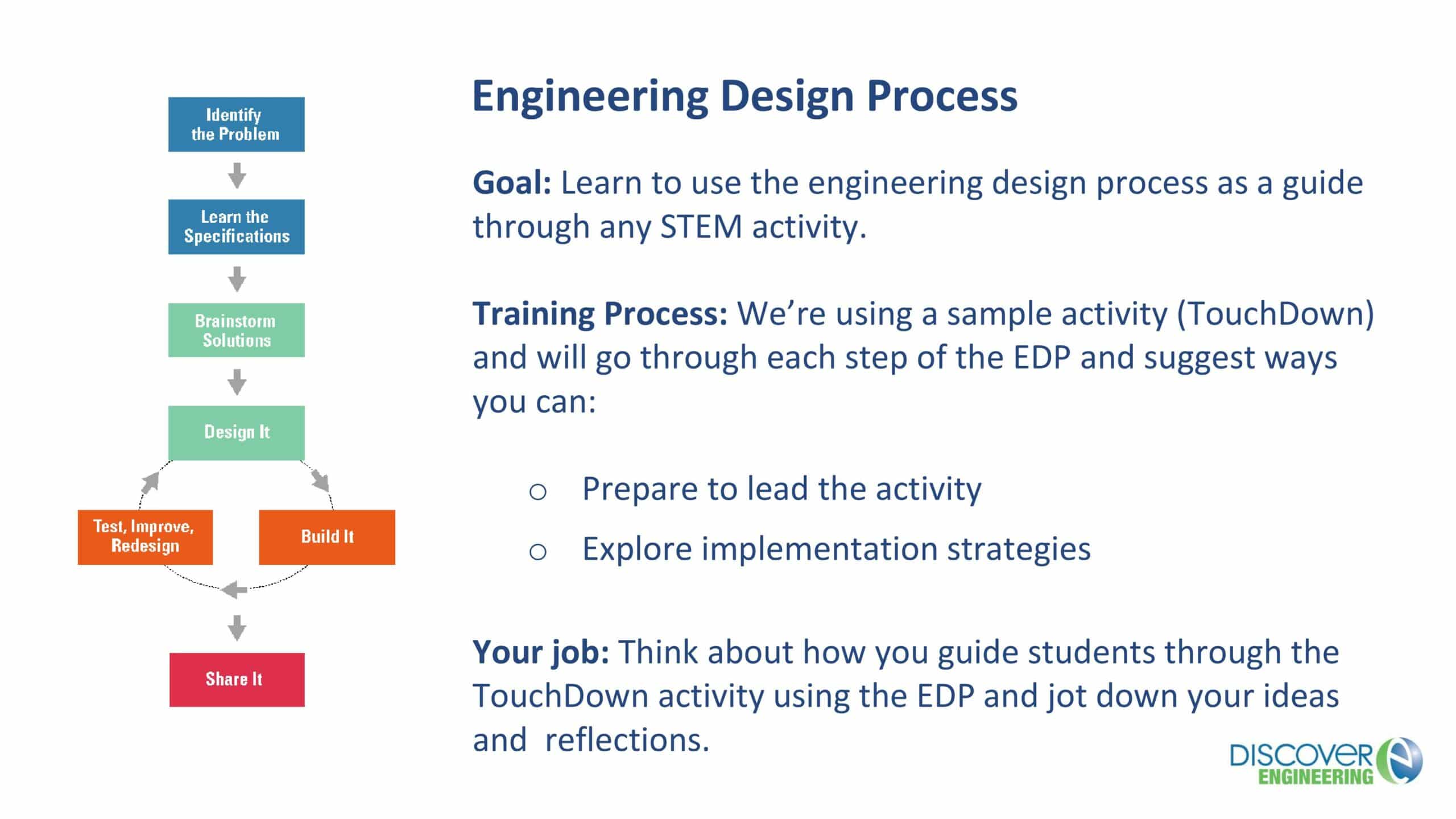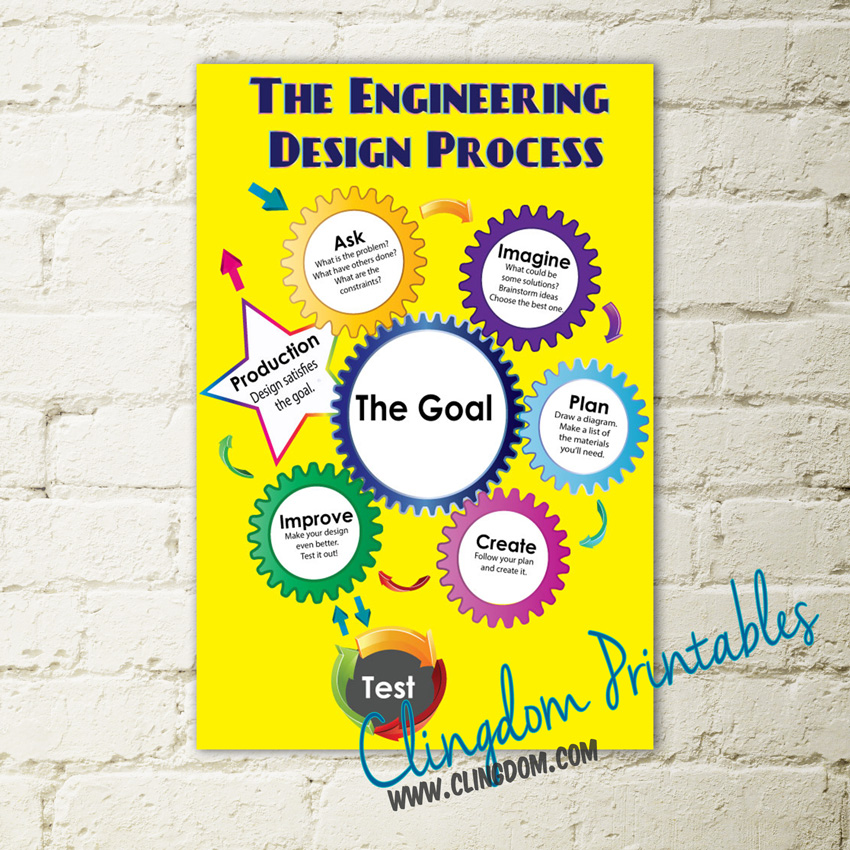Table Of Content

Students apply their knowledge of scale and geometry to design wearables that would help people in their daily lives, perhaps for medical reasons or convenience. Like engineers, student teams follow the steps of the design process, to research the wearable technology field (watching online videos an... Students are introduced to the engineering design process, focusing on the concept of brainstorming design alternatives. They learn that engineering is about designing creative ways to improve existing artifacts, technologies or processes, or developing new inventions that benefit society. Students apply what they have learned about the engineering design process to a real-life problem that affects them and/or their school.
C.3 – Justify Changes to the Plan
This involves understanding the problem, its scope, and the requirements of the project. Engineering is formulating a problem that can be solved through design. Science is formulating a question that can be solved through investigation. Students create a logical plan to build a prototype of their best idea to solve the problem stated in the GRASPS.
Hands-on Activity
The problem definition process results in a clear understanding of the scope of the design project and the resources available to solve the design problem. This understanding is also expressed in the form of criteria and constraints. Teams undertake several different types of engineering design projects.
Intelligent Graphics: Artificial Intelligence at the Visible Language Workshop Henry Lieberman - MIT Media Lab
Intelligent Graphics: Artificial Intelligence at the Visible Language Workshop Henry Lieberman.
Posted: Sun, 04 Oct 2020 16:57:59 GMT [source]
Design Requirements
Start with brainstorming activities that support an anything-goes approach. I used to start B – Develop Ideas by specifying requirements, but it wasn’t the best approach with younger students. Students are bursting with ideas at this point after researching, investigating, and defining the problem. This symmetry should help to eventually create a predictable and familiar rhythm of sequencing for the teacher and students throughout the process. For younger students, the reason to solve a STEM problem through EDP can be more contrived.
Engineering Design Process Steps
Simple high-interest STEM challenges and/or quick design videos might be good choices at this point. Many kids will want to compete for the greatest penny amount within their class, across sections, and against results from past years. You can also have students compete with regard to who guessed closest to their hypothesis for their prototype.
Specify Requirements
Students engineer a working pair of shin guards for soccer or similar contact sport from everyday materials. Since many factors go into the design of a shin guard, students follow the engineering design process to create a prototype. Student teams design, build and test small-sized gliders to maximize flight distance and an aerodynamic ratio, applying their knowledge of fluid dynamics to its role in flight. Students experience the entire engineering design process, from brainstorming to CAD (or by hand) drafting, including resea... Students follow the steps of the engineering design process to create their own ear trumpet devices (used before modern-day hearing aids), including testing them with a set of reproducible sounds. This activity uses the engineering design process to build the cooler as well as to measure ...
Make A Model Or Prototype
A process by which a design for an object or a structure is created is called a design process. However, engineering design tends to require a more extensive and specialized knowledge of technology, math, and science than other types of design. For example, a design challenge might ask students to build a pair of recyclable tennis shoes for less than $20. The requirement that the tennis shoes be recyclable and cost less than $20 will likely constrain the design to inexpensive materials that students can find in recycling bins. There are multiple variations of the engineering design process. However, good engineering design incorporates specific underlying principles.
After finalizing a concept to go ahead with, designers now need to get their hands dirty. The initial design stage is all about creating rough outlines or initial drafts of the proposed solution, with a focus on key features and design requirements. In doing so, designers develop a broader understanding of the project beyond the core design aspects. Moreover, they can identify potential risks, challenges, and technologies that can help them define a practical way forward. One or more prototypes are typically implemented to characterize various aspects of the design. Prototypes may be physical models of the design in which dimensions, materials, and fabrication processes emulate important aspects of the design.
Some depictions of the engineering design process delineate a separate step—communication. In the Figure 1 graphic, communication is considered to be incorporated throughout the process. For this activity, we call out a final step—communicate the solution—as a concluding stage to explain to others how the solution was designed, why it is useful, and how they might benefit from it. Students learn more about how muscles work and how biomedical engineers can help keep the muscular system healthy.

Engineering design is the process of creating a solution to a problem or need using engineering principles and techniques. It involves the systematic application of scientific and mathematical principles to design a product, system, or infrastructure that meets specific requirements and satisfies the needs of the user. This involves building a prototype and testing it to ensure that it meets the requirements of the project. The prototype should be refined until it meets all the requirements. The design requirements for your project will differ from those of anyone else, because yours will apply to your specific problem statement and the product, system, or experience that you are designing. Your requirements will be more specific and directly related to meeting the needs of your project's users.
Novice and veteran teachers can easily teach STEM through EDP to their virtual and brick-and-mortar students using everyday materials to create a rich, PBL (project-based learning) adventure. At this point in the engineering design process, students have been working multiple weeks. After the testing—a high point in the lesson—student enthusiasm to see the evaluation through to the end may be waning. Try to reenergize students with the fact that their efforts will help future boatbuilders better solve the problem.

No comments:
Post a Comment